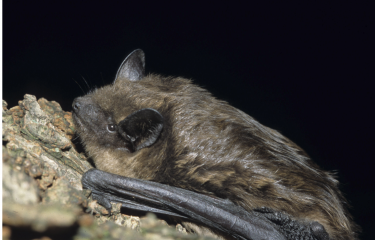A team from the Institut Pasteur in Paris, in collaboration with researchers in Spain, has identified Toscana virus in samples taken from patients in southern Spain. This virus is responsible for cases of encephalitis that have never been fully explained. The presence of this virus in the samples challenges the assumption that it was rare in the Mediterranean region. Thanks to this discovery, doctors can take a more effective approach to the diagnosis of encephalitis.
Human encephalitis is an acute inflammation of the brain associated with neurological dysfunction. It is often of infectious etiology, but the cause remains unknown in over a third of cases. The identification of a pathogen that causes encephalitis is a further step towards improving diagnosis and medical care for patients. The public health stakes are high, because those affected are invariably hospitalized, the mortality rate remains high, and patients who survive may suffer long-term neurological sequelae, whereas in some cases they could recover in an outpatient setting, freeing up valuable beds in intensive care units.
Toscana virus is circulating in southern Spain
In collaboration with Dr. Lola Fernandez-Garcia's team, the Evolutionary Genomics of RNA Viruses group, led by Etienne Simon-Lorière at the Institut Pasteur, has been working to discover the cause of previously unexplained cases of encephalitis in southern Spain: "Unfortunately, in the case of encephalitis or meningitis syndromes, it is often impossible to determine the cause," explains Etienne Simon-Lorière.
The team therefore used metagenomic sequencing. "This technique makes it possible to 'scan' all the nucleic acids (corresponding to genomes or their derivatives) present in an environment at a given time. We analyzed cerebrospinal fluid samples taken from patients in southern Spain. The data obtained were used to identify all the microorganisms present. And that's how we detected Toscana virus".
Improving the diagnosis of patients suffering from encephalitis in the region
As well as demonstrating the utility of metagenomic sequencing (or mNGS), this discovery by the Institut Pasteur paves the way for a rethinking diagnostic approach.
Toscana virus is transmitted by sandflies, small insects responsible for the transmission of various pathogens (including Leishmaniasis, for example). A 'classical' diagnosis already exists for encephalitis caused by Toscana virus. Doctors usually test for it in people who remember having recently been bitten by insects. But its use seems limited, possibly due to a lack of awareness among healthcare staff. What's more, "testing only people who remember being bitten by an insect is clearly not enough, especially when you're suffering from encephalitis, and therefore your brain function is not optimal" underlines Etienne Simon-Lorière. The diagnostic approach could therefore be reviewed.
The approach taken by the Institut Pasteur in this study is the future, but "there are still questions of cost and turnaround time before it can be used routinely in hospitals."
An increase in the circulation and detection of vector-borne viruses in Europe
As part of this research, Etienne Simon-Lorière's team has also developed a tool to help sequence this type of virus on samples with scant or degraded material. "This has enabled us to discover a Toscana virus known as 'reassortant,' i.e. one that has exchanged a segment of its genome with a Toscana virus from another lineage. This is a classic form of recombination in segmented viruses, but one that has never before been described for Toscana virus." This is indirect proof that these viruses are circulating more actively than previously thought in certain Mediterranean countries.
This discovery is further evidence of the increased circulation of viruses transmitted by vectors (mosquitoes, ticks, sandflies) in Europe, linked to climate change, and echoes the potential of existing technologies that were further enhanced by the COVID-19 pandemic to detect and monitor pathogens.
Back in 2020, the Institut Pasteur identified a novel virus (called Umbre), which infected neurons in the cerebral cortex.
------------------------------------------------------------------
This study comes under the Emerging Infectious Diseases priority scientific area in the Institut Pasteur's 2019-2023 Strategic Plan.
------------------------------------------------------------------
Source
Untargeted metagenomic sequencing identifies Toscana virus in patients with idiopathic meningitis, southern Spain, 2015 to 2019, Eurosurveillance, November 9, 2023.





